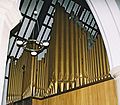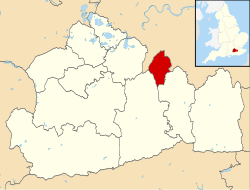This article includes a list of references, related reading, or external links, but its sources remain unclear because it lacks inline citations .(January 2020) |
| St Mary's Church, Ewell | |
|---|---|
 The Church of Saint Mary the Virgin, Ewell, seen from the West. | |
 St Mary's Church, Ewell | |
| Denomination | Church of England |
| Churchmanship | Liberal Catholic |
| Website | www.stmarysewell.com |
| History | |
| Dedication | Saint Mary the Virgin |
| Administration | |
| Province | Canterbury |
| Diocese | Guildford |
| Archdeaconry | Dorking |
| Deanery | Epsom |
| Parish | Ewell, St Mary |
| Clergy | |
| Vicar | Fr Mark Stafford SCP |
| Assistant | The Reverend Sue Ayling, OBE, Assistant Priest; Canon Maggie Marsh, Assistant Priest |
| Laity | |
| Organist/Director of music | Jonathan Holmes, MA (Oxon), B.Mus, FRCO, ARCM |
The Anglican Church of St Mary the Virgin, Ewell is the civic church of the borough of Epsom and Ewell in the county of Surrey in South East England.








